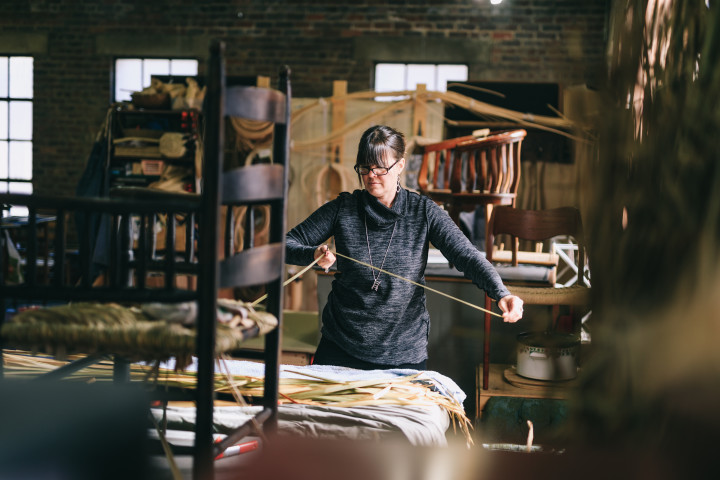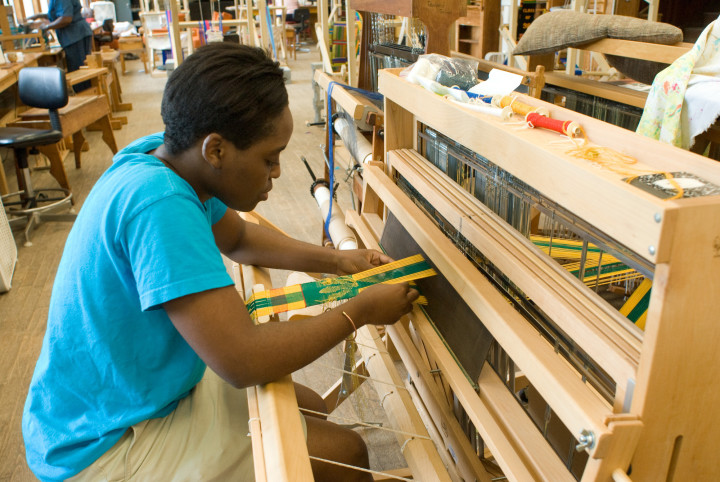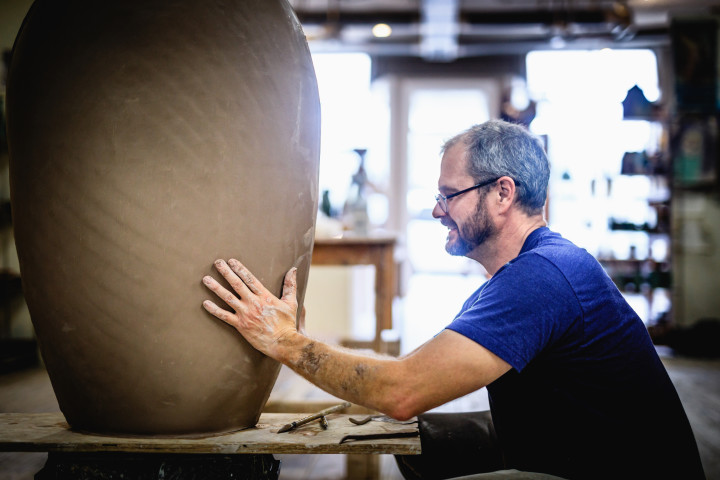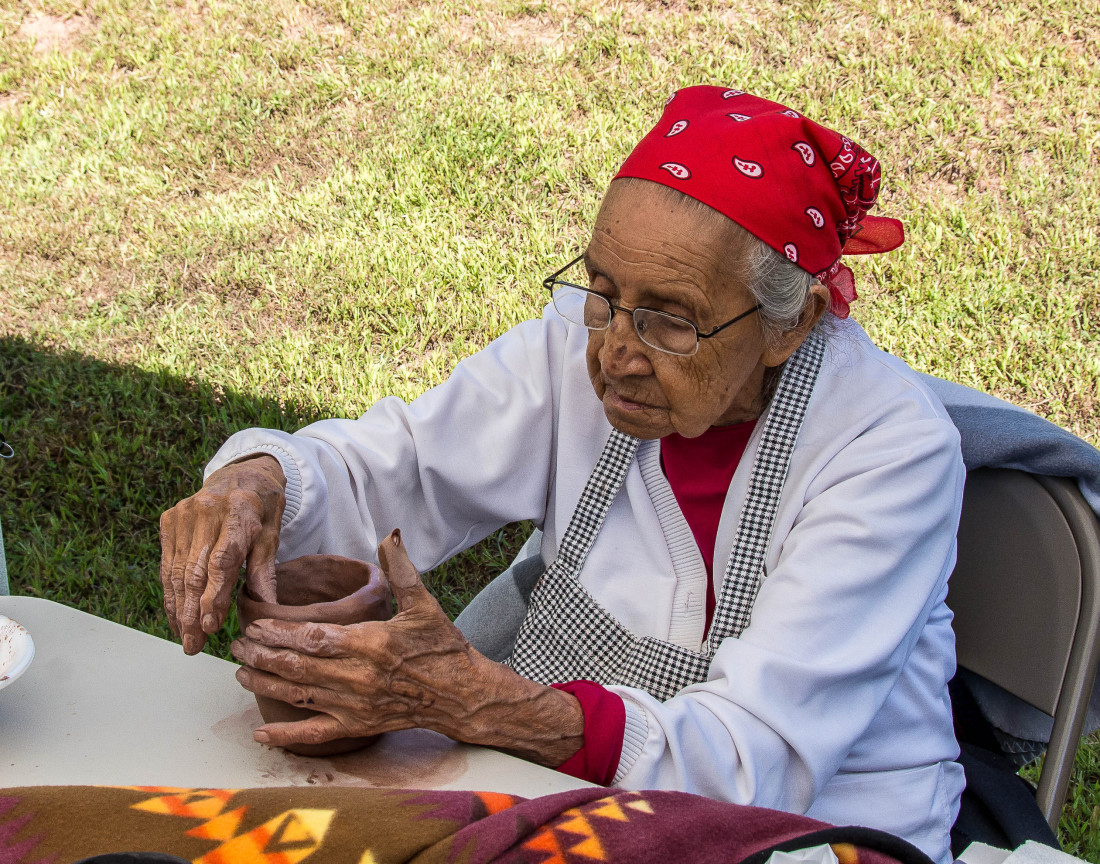Though Appalachia’s heritage crafters are perhaps better known for spinning flax fiber and forging knives than for high-tech proficiency, one group of artisans is staking claim to a slice of web real estate.
At a press event held last month, the Blue Ridge National Heritage Area (a federally designated span of 25 counties in which the culture and history of the Blue Ridge Mountains and foothills is actively being preserved) launched a digital project that will promote the region’s professional craft industry. Area artisans, according to a 2008 economic impact study, generate $206 million in annual sales. The Blue Ridge Craft Trails of Western North Carolina — BRNHA’s newest addition to its programming — “raises all boats” by connecting collectors with authentic makers, says Angie Chandler, BRNHA executive director.

“The biggest impediment for small businesses is educating the public on their work and what they do,” she says. “The Craft Trails are a collective opportunity to increase the visibility of all regional crafters and artisans.”
Gallery names, locations, hours and other information will be consolidated in an electronic portal accessible by desktop and mobile devices. From there, users can scroll through artists spanning the 25-county area. The hope is that those viewers will be inspired to visit the creative hotspots they discover. In return, galleries receive more traffic, and collectors go home with unique, handmade items.
Paths already taken
Still, Chandler says, the concept isn’t new. “We’re not reinventing the wheel here,” she says. The Craft Trails date back to the ’90s, when HandMade in America began publishing paper guidebooks. The organization has since disbanded, however, and its last guide came out in 2003.
Dedicated to preserving and interpreting five assets — music, agriculture, natural heritage, Cherokee culture and craft — BRNHA decided to resurrect the project last summer. It joins the Blue Ridge Music Trails, an oral history partnership with WNCW, 88.7-FM, that was launched in 2013. Because 73 percent of represented musicians agree that the initiative helped rev up business, Chandler says BRNHA is taking notes from the music trails.
But being a 501 (c)(3) makes for an interesting setup. As a nonprofit commissioned, largely, to help other nonprofits, BRNHA must match its federal support with external proposals, private donations and fundraisers. The Craft Trails endeavor, for instance, is fueled by a $90,000 grant from the Appalachian Regional Commission. Matching funds also come from the N.C. Arts Council, the Community Foundation of Western North Carolina and private donors. That capital affords market research, site documentation and web development.

Phase one calls for six listening sessions. In these community forums, BRNHA will field crafters’ comments and suggestions, and use that feedback to select an initial 75 galleries. The Southern Highland Craft Guild is one of six partners providing meeting space and support.
Hannah Barry, director of public relations and technology at the guild, says the craft trails couldn’t come at a better time. Despite economic dips — chiefly the recession in 2008 — the organization has remained relevant, boasting four brick-and-mortar shops, craft sales and two rotating exhibits. Still, Barry admits to a less-than-impressive online presence. (She does note that an e-store revamp is in the works, thanks to a grant from BRNHA.)
“It’s ironic that craftsmen and women who are not using modern technologies to get a final product are now relying on technology for promotion,” says Barry. “These people work with their hands, not behind a computer.”
History and industry
But bringing crafts into the public eye has been a long time coming.
When settlers pushed east from Tennessee’s Watauga settlements, Appalachia’s unforgiving topography was both the region’s disadvantage and saving grace. Back then, natural resources beckoned timber barons. They came in droves and did well for themselves until the stock market crash of 1929.
During that nationwide struggle, WNC residents returned to what they knew: traditional crafts. Women sewed coverlets, and men carved furniture. They made beautifully functional wares, and Frances Goodrich, the guild’s founder, took notice. “A Presbyterian missionary, she realized a lot of people living in the mountains were suffering from the [Great] Depression,” says Barry.
Goodrich became fascinated with weaving. An anecdote in “Craft Revival: Shaping Western North Carolina Past and Present,” Western Carolina University’s digital effort to resuscitate handcraft, cites the first eiderdown that made her swoon. According to the database, “out of pure good will” a neighbor brought Goodrich a 40-year-old coverlet woven in the double bowknot pattern. The woman dyed it a “golden brown on a cream-colored background” using chestnut.

“[It] was as fine a color as the day it was finished,” writes Goodrich. She established Allanstand Cottage Industries, now known as the Allanstand Craft Shop, and later the guild.
‘We continue to tell the story’
“The mountain people capitalized on what they knew, like rug hooking and carving, and that built up the economy,” says Barry. “Crafts would boom again in the ’60s and ’70s.” Goodrich deserves some credit: She and other women like Lucy Morgan, founder of Penland School of Crafts, and Olive Dame Campbell, founder of John C. Campbell Folk School, turned a pastime into an industry.
Keather Gougler of John C. Campbell says Olive’s early involvement helped communities supplement their incomes. “Back in the ’30s, Olive noticed men sitting around and whittling at a local store,” says Gougler. Fred Scroggs, the general store’s owner, tried to cow these men as best he could because they’d start carving right into his benches if wood ran low.
Noticing their skill, Olive established the Brasstown Carvers. The school bought “class A” quality work outright and paid students when “class B” sold. These men and women came to rely on their skills, using carvings to pay for groceries and doctor’s visits. Woodcarving classes are still offered today.
“We continue to tell the story of the region’s history,” says Gougler. “Through regular programs and classes, we continue an important custom.”
With 6,000 students per year, craft schools also buttress WNC’s economy. According to a study conducted by DESS Business Research in 2008, craft schools contribute nearly $12 million each year to the local economy. Craft nonprofits, like the guild, gross $4.4 million and 2,200 individual artists have an annual economic impact of $86.2 million.
“I don’t think Asheville would be what it is today if it weren’t for people making beautiful crafts,” says Barry. “The industry slowly but surely brought other types of commerce to the area.”
And now BRNHA is adding to the visibility and viability of weavers, smithies and other makers. The Blue Ridge Craft Trails of Western North Carolina is slated for completion in five years. “We want WNC to be celebrated and known as an international center for the crafts,” says Chandler. “We want artisans to be able to use their work to bring economic benefit to themselves and the region.”




Before you comment
The comments section is here to provide a platform for civil dialogue on the issues we face together as a local community. Xpress is committed to offering this platform for all voices, but when the tone of the discussion gets nasty or strays off topic, we believe many people choose not to participate. Xpress editors are determined to moderate comments to ensure a constructive interchange is maintained. All comments judged not to be in keeping with the spirit of civil discourse will be removed and repeat violators will be banned. See here for our terms of service. Thank you for being part of this effort to promote respectful discussion.